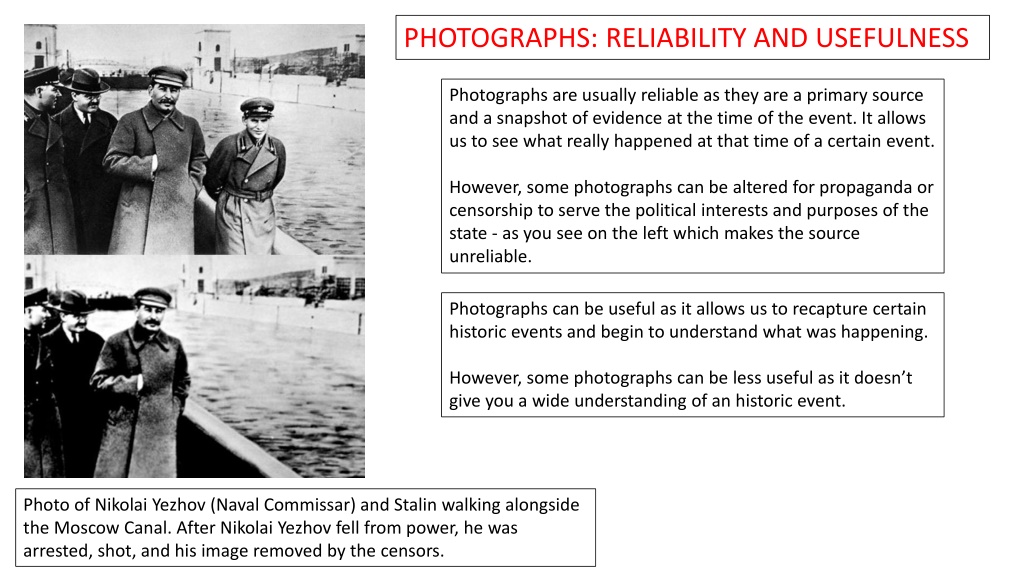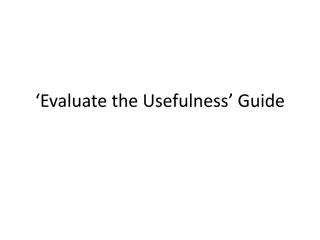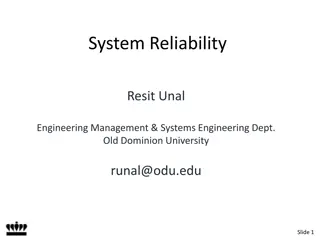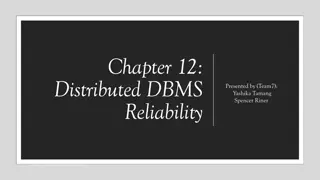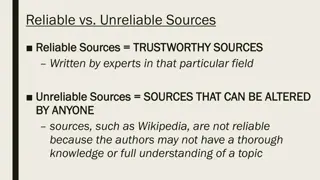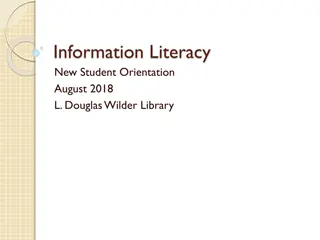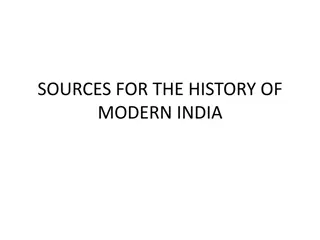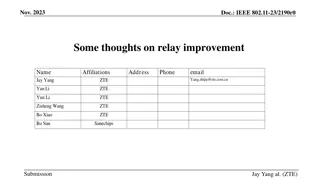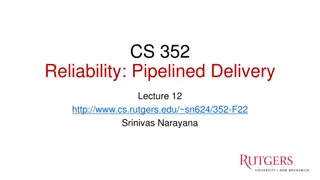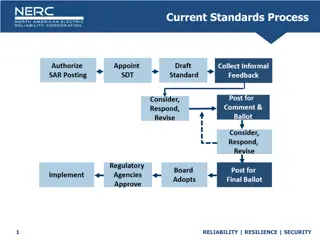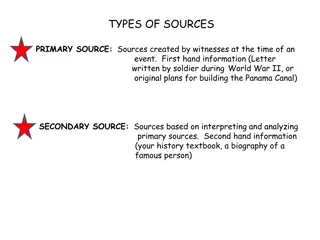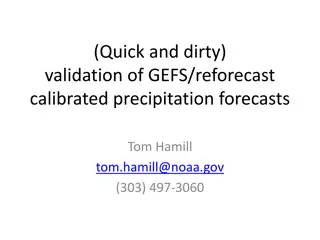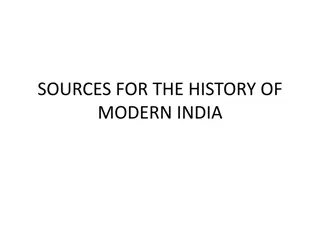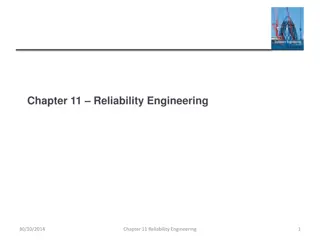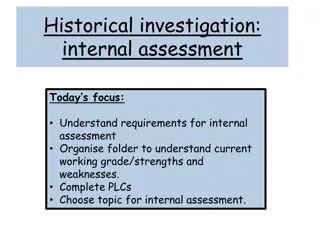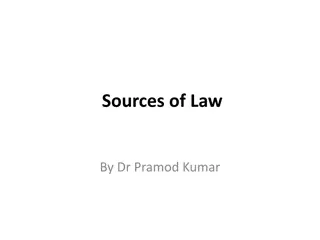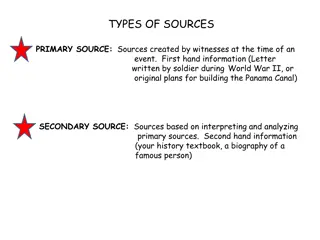Reliability and Usefulness of Historical Sources
Photographs, diary entries, and letters are valuable historical sources, providing insights into past events. While photographs offer a snapshot of the truth, they can also be manipulated. Diary entries reflect personal experiences authentically but may lack objective facts. Letters serve as private communications, shedding light on personal relationships and perspectives. Understanding the reliability and usefulness of these sources is crucial in historical research.
Download Presentation

Please find below an Image/Link to download the presentation.
The content on the website is provided AS IS for your information and personal use only. It may not be sold, licensed, or shared on other websites without obtaining consent from the author. Download presentation by click this link. If you encounter any issues during the download, it is possible that the publisher has removed the file from their server.
E N D
Presentation Transcript
PHOTOGRAPHS: RELIABILITY AND USEFULNESS Photographs are usually reliable as they are a primary source and a snapshot of evidence at the time of the event. It allows us to see what really happened at that time of a certain event. However, some photographs can be altered for propaganda or censorship to serve the political interests and purposes of the state - as you see on the left which makes the source unreliable. Photographs can be useful as it allows us to recapture certain historic events and begin to understand what was happening. However, some photographs can be less useful as it doesn t give you a wide understanding of an historic event. Photo of Nikolai Yezhov (Naval Commissar) and Stalin walking alongside the Moscow Canal. After Nikolai Yezhov fell from power, he was arrested, shot, and his image removed by the censors.
Diary Entry of a WW1 Soldier December 1914. DIARY ENTIRES: RELIABILITY AND USEFULNESS I am sorry if these words are scrawled. My hands are shaking with the adrenaline. These dark, trench walls seem to be closing in on me, suffocating me. All I can smell is think, dank smoke. Splatters of crimson blood drip here and there. I cannot bear to look. The sky is a dull grey, rain soaking my hair and clothes. I am frozen to the bone. I am worried because I have lost feelings in both my legs, and it pains me to walk. I see rats the size of dogs attacking dismembered limbs, and the sigh is almost to much to bear. All I can hear is exploding bombs, muffled by the trench and the screams of agony. They carry on throughout the night, and I go made from the constant cries of death. I think about my family day and night. The remaining friends I have now cling to life like a limpet in a stormy sea. We discuss many things, from family to the guns on our shoulders. Diary entries are reliable as it is written at the time of the event and they are personal to those who write and are not concerned with views of others meaning they usually don t alter the truth. It also usually consolidates with our own knowledge. Some diary entries could be unreliable as writing down thoughts about an event involves a process of narrative selection it is simply one person s version of events. Diary entries are useful as it allows us to understand a person and understand the conditions they were facing during any historic event. However, some diary entries could be less useful as it rarely gives us solid facts about the time of an event. It is usually a personal reflection of the past.
LETTERS: RELIABILITY AND USEFULNESS Letters just like diary entries are usually reliable as they are written at the time of an event and they are personal to those who write them meaning they usually don t alter the truth. It also usually consolidates with our own knowledge. However, some letters can be unreliable as letters are used for the sole purpose of communicating with someone privately meaning what is said in the letters could potentially not be true or go against what we know from our own knowledge. Again like a diary entry, letters can be useful in understanding a person or relationship between two people. It allows us to see private communications that could be important in any historic event. However, some letters could be less useful as again the truth could be altered or the letters could be vague when finding out certain facts e.g. a WW1 soldier writing home to his family might not want to tell them the real conditions of the war to protect his family so he could lie meaning the letter would be useless in understanding the conditions of war whereas a diary entry could potentially be more useful.
CARTOONS: RELIABILITY AND USEFULNESS Cartoons are not reliable as they are usually exaggerated and simplifying complex historical events. They can also be very unrepresentative and may not reflect the views of everybody. They are usually used to shape political opinion. However, cartoons can be USEFUL in offering an insight to public opinion and how they feel about a certain event even if the cartoon is factually incorrect.
POSTERS: RELIABILITY AND USEFULNESS Just like cartoons, posters are not reliable as they are usually used for propaganda purposes to try and manipulate the public. They can also be used to shape political opinion. However, posters can be USEFUL in offering an insight to political agendas and showing us how they manipulated the public into doing what they needed them to do.
NEWS SOURCES: RELIABILITY AND USEFULNESS Newspapers can be reliable as it allows us to see how people viewed historic events during that specific time. However, newspapers can be unreliable as news sources can be very objective. Journalists often write in a very opinionated way to influence its audience meaning the facts could be distorted. Newspapers although often subject to censorship and control by governments can be USEFUL in showing how the powerful manipulated the views of the public. Newspapers can also be useless as sometimes they can lack vital information and often speculative. Journalists cannot be as thorough with their research.
STATISTICS: RELIABILITY AND USEFULNESS Statistics can be reliable as it can provide important scientific support for general conclusions we make. A lot of hard work and research goes into statistics and they can summarise very accurately. However, they can also be unreliable because statistics can be used selectively to make a point. Also in countries where there are dictatorships who have strict control over their information it is known that their statistics are unreliable. Statistics can be USEFUL as it allows us to use numbers to generate graphs that show correlation, patterns and trends and for historians it means we can propose causes/consequences and significance. However, they can also be USELESS because it might only be a small representation. Statistics only provide information for an aspect of a question, one time or one place they can be very specific.
GOVERNMENT REPORTS: RELIABILITY AND USEFULNESS An official government report is reliable and credible as it includes everything that a government would want to know about different policies and it is often written by an important individual and the report would be reviewed by others. However, it can be unreliable if the government chooses to alter the facts or only use part of the report for certain purposes e.g. part of a propaganda or election campaign Government reports can be useful in gathering information in understanding certain policies. However, the usefulness of the source can be limited if again the report is only for a certain purpose e.g. wanting the public to hear/see certain things.
Study Sources A and B. How useful are Sources A and B for an enquiry into the problems the medical service faced transporting injured soldiers? Explain your answer, using Sources A and B and your own knowledge of the historical context. Source A: From the recorded memories of William Easton, East Anglian Field Ambulance. He was 18 in 1916. Here he described the conditions near Ypres in 1917. Up at Ypres we used to go to the line and we d be waist deep in mud. We were carrying the wounded down near a place called Hooge, where had been a terrific amount of fighting. One trip down a trench in those conditions you would be all in exhausted. If you got two or three wounded men down in a day, that was all you could expect to do. We had to carry men in fours there and we had to be very careful because you could do more damage to a man than the shell if you jolted him too much or he fell off the stretcher. To make carrying easier we had slings which we put around our soldiers and over the stretchers handles. Source B: An extract from an article in the Journal of the Royal Army Medical Corps. 1915. Admirable as was the organisation of the large base hospitals, the transport of the wounded from the fighting seems to have been very badly managed during the advance of the Germans through Belgium and northern France. The supply of motor ambulances proved totally inadequate and the slightly wounded had to shift for themselves and squeeze into goods trains.6
Useful although they are his memories which means some facts could be distorted BUT from what he is saying we know it is true from own knowledge. His memories were recorded at the time of the event. Usefulness? True we know the conditions of the front line/trenches during battle. Hooge area and there was almost constant fighting in the region over the next three years. The opposing front lines were so close to each other. The area was regarded as a hazardous area for the infantry and trench raids were frequent. Source A: From the recorded memories of William Easton, East Anglian Field Ambulance. He was 18 in 1916. Here he described the conditions near Ypres in 1917. True were known as stretcher bearers and they would recover the dead/wounded and were often under fire. They had to deal with mud, shells and crowded, twisting trenches. There were only 16 bearers per battalion of up to 1,000 soldiers and it took 4 men to carry a stretcher, sometimes even 6-8 in the thick mud of the Ypres battle fields which meant often enough there were not enough bearers. Up at Ypres we used to go to the line and we d be waist deep in mud. We were carrying the wounded down near a place called Hooge, where had been a terrific amount of fighting. One trip down a trench in those conditions you would be all in exhausted. If you got two or three wounded men down in a day, that was all you could expect to do. We had to carry men in fours there and we had to be very careful because you could do more damage to a man than the shell if you jolted him too much or he fell off the stretcher. To make carrying easier we had slings which we put around our soldiers and over the stretchers handles. This source IS USEFUL for an enquiry into the problems the medical service faced transporting injured soldiers. It clearly depicts how the conditions affected the organisation which we know is true from our own knowledge.
Usefulness? We know that the motor ambulances at times were not as useful due to the conditions of the battlefield and trenches HOWEVER, this was written in 1915 and by 1917 the evacuation route using ambulances had greatly improved. Journal article in the Royal Army Medical Corps isn t going to be as reliable as Source A in showing the problems the medical service faced when transporting injured soldiers. We also don t know who has written this so it could be someone trying to not expose the real conditions of the war to the rest of the public. Source B: An extract from an article in the Journal of the Royal Army Medical Corps. 1915. Admirable as was the organisation of the large base hospitals, the transport of the wounded from the fighting seems to have been very badly managed during the advance of the Germans through Belgium and northern France. The supply of motor ambulances proved totally inadequate and the slightly wounded had to shift for themselves and squeeze into goods trains. Source B is not as useful as Source A and is not that useful in understanding the problems the medical service faced when transporting injured soldiers. It doesn t explain how the conditions the medical services were facing affected the organisation and transport of injured soldiers. This is not that useful in understanding WHY the slightly wounded had to shift themselves BUT we know there were not enough stretcher bearers to go around so for those who were only slightly wounded could make their own way to the hospitals using the hospital trains.
